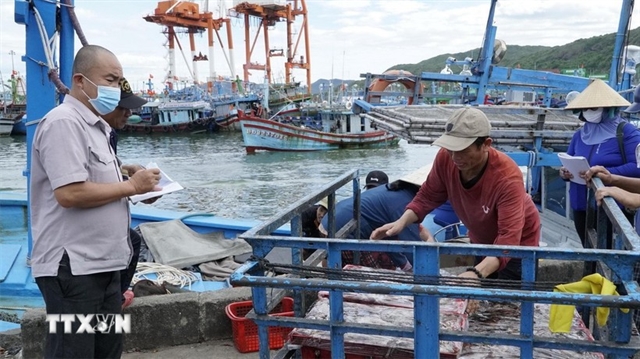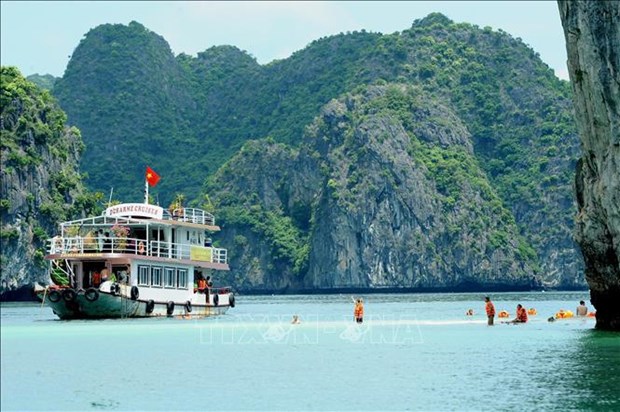 Society
Society

 |
| Hạ Long Bay. VNA/VNS Photo |
QUẢNG NINH – Environmental protection is viewed as a focal, consistent and priority task during the management, preservation and sustainable promotion of Hạ Long Bay world natural heritage site.
That was the message from head of the bay's management board Vũ Kiên Cường.
To help Hạ Long Bay remain a green, clean and beautiful destination attractive to domestic and international visitors, joint efforts by residents, tourists and the international community are necessary, he said.
Located off the coast of northern Quảng Ninh Province, Hạ Long Bay, the first world natural heritage site of Việt Nam, was recognised by UNESCO in 1994 for its natural landscape value, and in 2000 for the values of natural landscape, geology, and geomorphology. It was listed as a special national relic site in 2009 and became one of the new seven natural wonders of the world in 2011.
In September 2023, the World Heritage Committee approved the extension of the world heritage site’s boundary to the neighbouring Cát Bà Archipelago of Hải Phòng City.
Boasting global and national outstanding values and holding many domestic and international titles, the bay has long been a tourist magnet in Việt Nam as well as the region and the world.
However, this heritage is now under multidimensional pressure, especially environmental issues, as its onshore areas are adjacent to many localities with fast urbanisation while the bay is a venue for a wide range of socio-economic activities such as tourism, aquaculture, fishing, and sea transportation.
Cường said realising the importance of environmental protection, the bay management board and local authorities have paid consistent attention to communications to enhance the local community, businesses, and tourists’ sense of responsibility towards the task.
He noted that the board has stepped up the collection and treatment of waste and wastewater, as well as the control over waste sources. Waste collection focuses on two zones – along the edge of the bay to prevent waste discharged from urban and concentrated residential areas, and in the bay’s core areas where tourism, services, and other socio-economic activities take place.
Hạ Long Bay is also taking the lead in applying scientific and technological advances to environmental protection, especially wastewater treatment, he said, noting that with support from Japanese experts, the waste treatment system at places of interest is being upgraded to use the Jokaso technology, which treats wastewater at source by Japan’s biotechnology.
The quality of the bay’s water environment has been monitored quarterly and found to be within the permissible level under Việt Nam’s standards. Wastewater from tourist vessels, attractions and coastal residential areas has also been handled.
In 2019, a campaign named “Hạ Long Bay free of plastic waste” was launched by the bay management board and has received strong support from businesses, travellers, and locals to eradicate the use of single-use plastic products in tourism activities, Cường continued.
In addition, authorities have also promoted the replacement of polystyrene in floating facilities on the bay with sustainable materials. In the core zone of the heritage site, tens of thousands of polystyrene objects have been replaced, reaching 94 per cent, the official said, describing this as encouraging. VNS